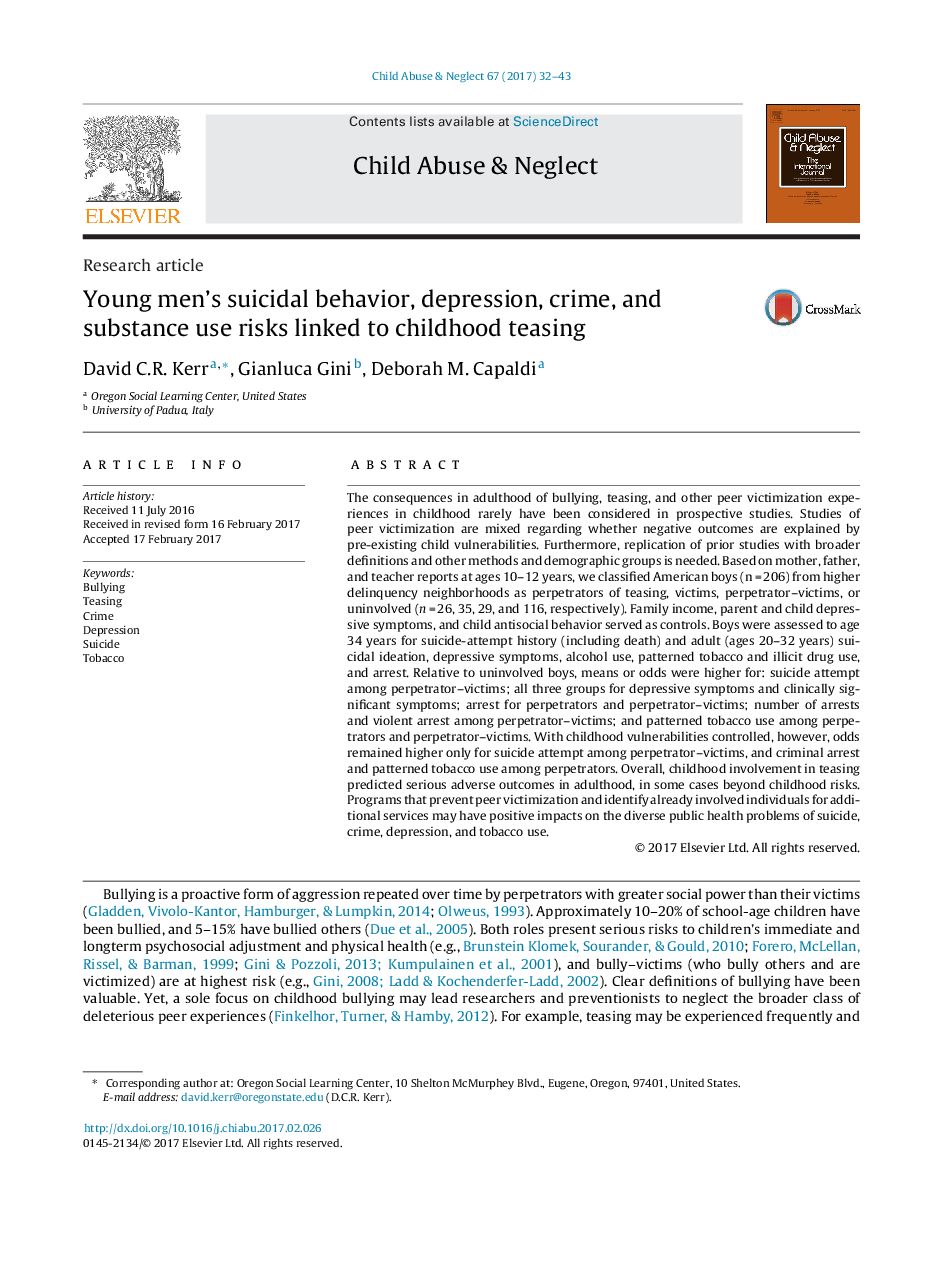The consequences in adulthood of bullying, teasing, and other peer victimization experiences in childhood rarely have been considered in prospective studies. Studies of peer victimization are mixed regarding whether negative outcomes are explained by pre-existing child vulnerabilities. Furthermore, replication of prior studies with broader definitions and other methods and demographic groups is needed. Based on mother, father, and teacher reports at ages 10â12 years, we classified American boys (n = 206) from higher delinquency neighborhoods as perpetrators of teasing, victims, perpetratorâvictims, or uninvolved (n = 26, 35, 29, and 116, respectively). Family income, parent and child depressive symptoms, and child antisocial behavior served as controls. Boys were assessed to age 34 years for suicide-attempt history (including death) and adult (ages 20â32 years) suicidal ideation, depressive symptoms, alcohol use, patterned tobacco and illicit drug use, and arrest. Relative to uninvolved boys, means or odds were higher for: suicide attempt among perpetratorâvictims; all three groups for depressive symptoms and clinically significant symptoms; arrest for perpetrators and perpetratorâvictims; number of arrests and violent arrest among perpetratorâvictims; and patterned tobacco use among perpetrators and perpetratorâvictims. With childhood vulnerabilities controlled, however, odds remained higher only for suicide attempt among perpetratorâvictims, and criminal arrest and patterned tobacco use among perpetrators. Overall, childhood involvement in teasing predicted serious adverse outcomes in adulthood, in some cases beyond childhood risks. Programs that prevent peer victimization and identify already involved individuals for additional services may have positive impacts on the diverse public health problems of suicide, crime, depression, and tobacco use.


